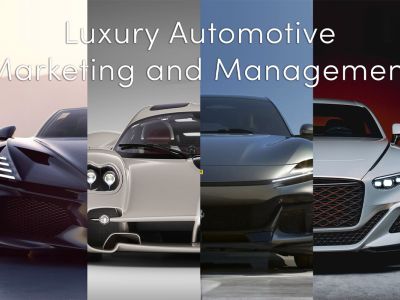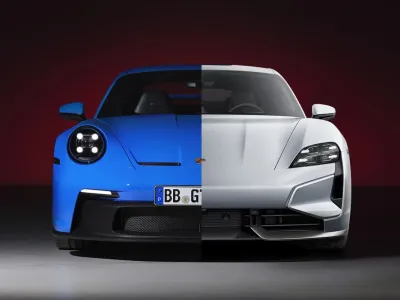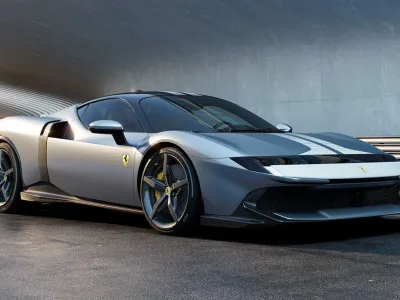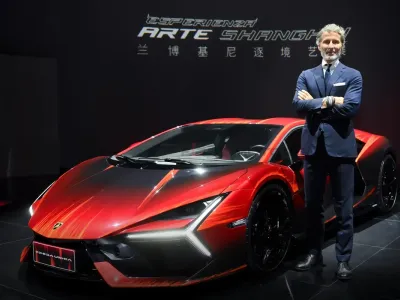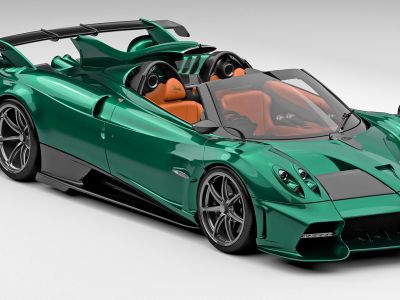Luxury Automotive Customer Journey toward 2030: What’s next?
Nowadays, the creation and development of a true comprehensive brand experience are two of the most important factors in an Automotive Manufacturer’s strategy. Throughout the decades the objective of creating a car that would simply fit the largest number of potential customers has significantly shifted. In the luxury performance automotive segment, the objective was never to mass produce to accommodate the highest number of clients possible, but similar trends shift are developing nonetheless. Building a beautiful product, capable of outstanding performance is not enough anymore to ensure customer emotional involvement and loyalty as highlighted by Mr Carlo Bonzanigo, Senior Vice President Business Unit Design at Pininfarina.

The big new challenge is then creating a real ecosystem of experiences and values that fulfil the clients’ needs and that they can identify with. Only this effort creates additional value that can give a solid competitive advantage over other OEMs. From here the necessity of developing a multichannel strategy to accompany every valued client through steps, or touchpoints, toward the purchase and beyond.
So, what caused this change? How has it translated into practice so far? And where does the industry go from here?
FOUR FACTORS AND THE MARKET CHANGE
In the early 1990s, the fundamental way to market vehicles changed due to major transformations in the global economy. This change in the mass market naturally reflected on the high-end segments too.
Four are the major factors that caused this shift.
-
Reduced Market Homogeneity. This change started early on as social class divisions, income inequalities, lifestyles, and age created fragmentation. This created numerous niches that were unlikely to be covered by a single company with one or a few products.
-
Limits to Mass Production Process. Efficiency initially obtained through stable inputs, production process, and outputs. The capacity for mass production started to decline as Labour costs and raw material prices lost stability due to reduced productivity in the 70s. At the same time, the mentioned increasing fragmentation commanded more flexibility, which further limited the mass production capacity. Finally, oil crises in the 70s and 80s affected the demand and subsequent production output that was previously kept in check through stock manoeuvring (Pine & Gilmore, 1997).
-
Instability of Demand. Two variables were the major causes of the loss of stability and predictability in demand. One was the market saturation that gave more bargaining power to the customer. It meant a shift from a sellers’ market to a buyers’ one making it more difficult to predict the future preferences, demand direction, and volume. The second was improving technology which simplified the production of higher-quality components or made the design and production of a wider variety of products cheaper.
-
The Internet and Globalisation. Globalisation along with the possibilities opened by the internet, and the marketing based on big data created a desire for uniqueness and the opportunities for companies to segment, target, and satisfy extremely specific requirements. Within the Luxury Performance Automotive sector, this translates into the ever-expanding range of services offered by each manufacturer in the niche. It is not a case then that just in the last decade all the major luxury automakers greatly enhanced their personalisation services as analysed in Tailor-made: What luxury car customers can't go without. Aston Martin’s Q, Bentley’s Mulliner, Ferrari Tailor-Made, Lamborghini’s Ad Personam, McLaren’s MSO, Porsche’s Exclusive Manufaktur, and Rolls Royce’s Bespoke.
These conditions ultimately caused the shift from a Mass Production to Mass Customisation market (Pine & Gilmore, 1997). With digitalisation also, the key question in this market becomes: How is selling mobility services different from selling vehicles? (Candelo, 2019)
FRAMEWORK
To define the Customer Journey, a popular tool is the Customer Journey Map. It can be developed in many different ways and can go very deep into details or be more generic. There is no right or wrong answer here, as the rules and steps to follow can vary greatly from industry to industry and even from company to company. Within the same market segment are still numerous other factors that can require framework differentiation. For example, different KPIs, different services range and width, marketing mix extension, slight differences in target customers, and so on. The key factors to control and develop the map and business on are the touchpoints.
Ferrari Marketing mix gives a good indication of the kind of customer service and touchpoints strategy a company needs in the luxury performance automotive industry. Each contact with the customer has to be anticipated, and every problem addressed creating a seamless experience.
This doesn’t happen by accident; it happens by design. As is often the case in life, making something look easy is very difficult – Harvard Business Review
The mapping process starts with the client’s persona definition, involving marketing psychology analysis. Once this first phase is achieved, each step of the journey is developed with a precise target.
Here is an example of a Customer Journey Map for a generic luxury automotive manufacturer. Naturally, as mentioned previously, each company would apply specific strategies, KPIs, and touchpoints. Maps like this can become much more complicated as each service is outlined and constantly updated. So, this is a simple but broad enough template.
 *Click or tap on the image to enlarge
*Click or tap on the image to enlarge
SUGGESTIONS
A key factor is in the latest trends of online communication and digitalisation. Offering increasing specialised and personalised virtual content reserved to owners, like the ones that are sometimes offered via app, is another way to improve brand exclusivity and enrich the ownership experience.
Also, through the internet, buyers communicate more than ever before and form communities where information is gathered, and experiences are shared. So, offering an official platform once again reserved for owners would enhance the sense of belonging by making them active participants instead of simple spectators. This, in turn, represents also a great way for a company itself to gain a better understanding of how interactions are established, and how opinions are formed among their target audience. It would ultimately also be a much more cost-effective measure to put in place compared to other traditional marketing activities.
While cars’ voice-control become increasingly common, another field that offers a wide variety of applications is augmented reality. Some uses are already common. In the luxury segment is employed for the cars’ specification process. In the car itself then, new applications could be found not only for road directions but for example when it comes to on-track performance for sports cars too.
 *New Luxury Post-Opulence Concept introduced by Rolls-Royce
*New Luxury Post-Opulence Concept introduced by Rolls-Royce
Academic Sources:
Candelo E., 2019, Marketing Innovations in the Automotive Industry, Springer, International Series in Advanced Management Studies
Pine B.J. & Gilmore J.H., 1997, The experience economy: past, present, and future. Available Here
If you like what you read here and you would like to support me in developing this platform you can do it here:
IF YOU WOULD LIKE TO SUPPORT ME AND THIS WEBSITE’s DEVELOPMENT
